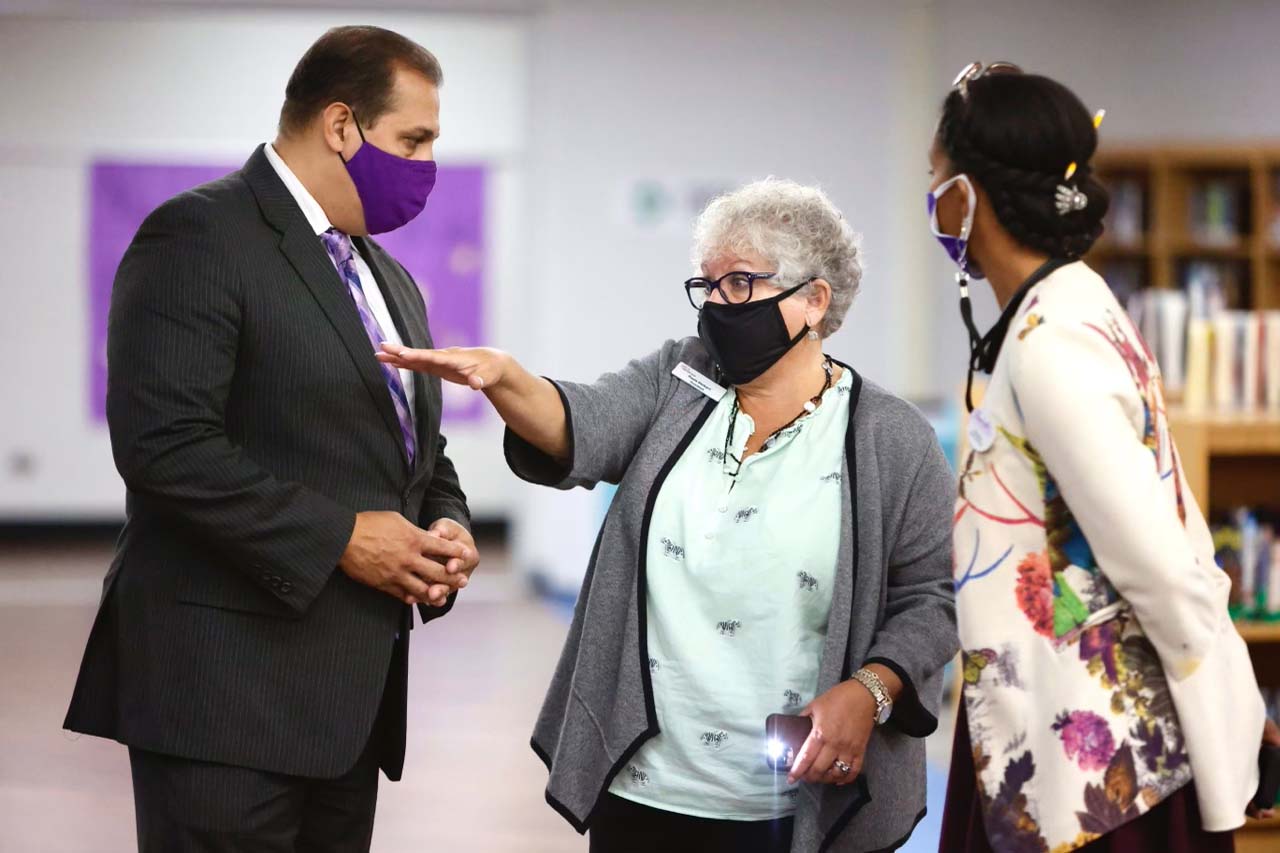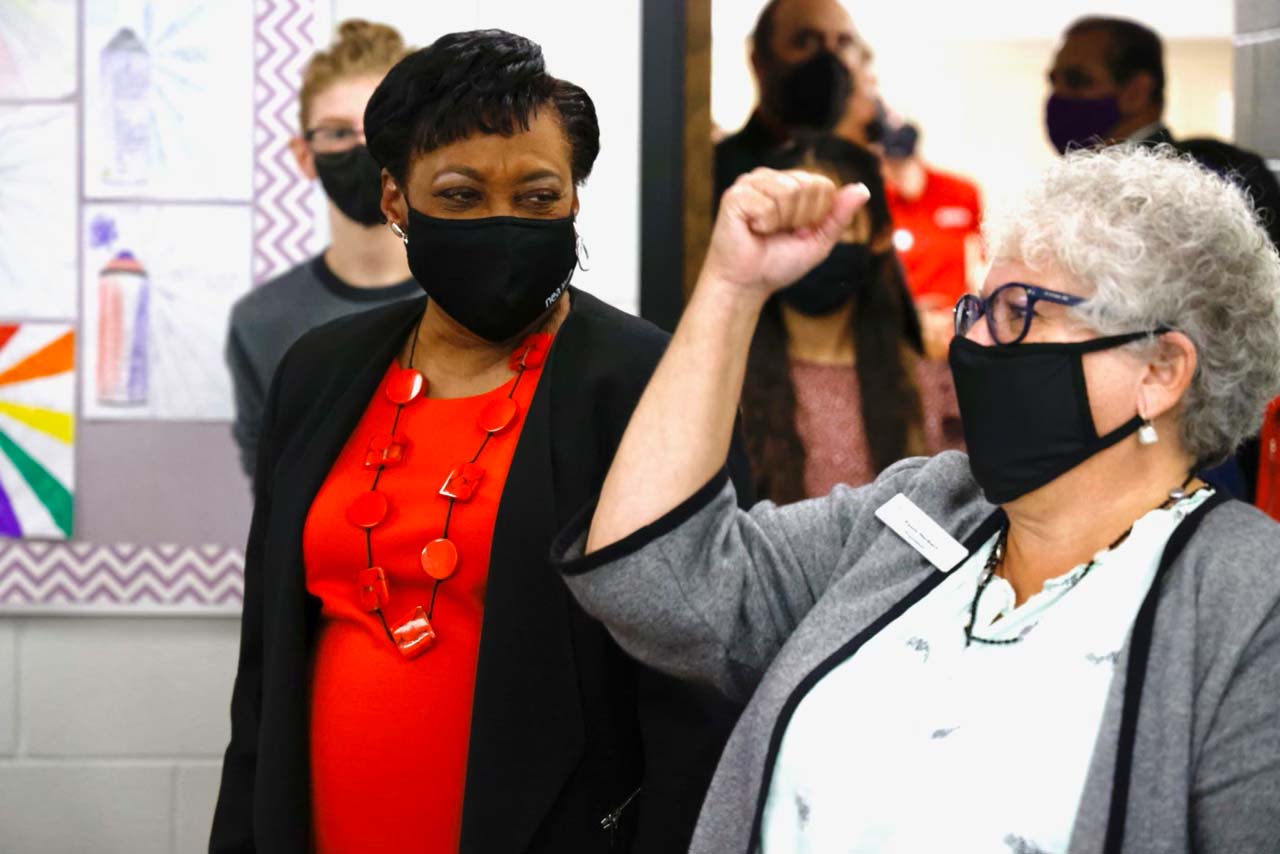NEA, MEA President Roundtable with Farmington Educators & Students

FARMINGTON, Mich. – Following the largest education investment in Michigan’s history of $17 billion – which closed the funding gap between the highest- and lowest-funded school districts all without raising taxes – National Education Association (NEA) President Becky Pringle met with Michigan Education Association (MEA) President Paula Herbart, educators, school administrators, and students from Farmington Public Schools in Oakland County to discuss how state and federal funds have ensured a smooth transition as districts across the state move back to in-person learning.
“COVID rescue funds from the state and federal government are an opportunity to show communities what is possible when Michigan invests in students and their schools,” said Pringle. “Students still need help recovering from the pandemic—academically, socially and emotionally. President Herbart and I agree that relief funds must be used for supports that will help students succeed, solving Michigan’s educator shortage, and ensuring that schools are always the safest place in any community.”

In February of 2021, Governor Gretchen Whitmer created the Student Recovery Advisory Council of Michigan. The Council has released a Blueprint that districts can use to create their own comprehensive student recovery plans. The Blueprint is designed to support local education leaders in developing and implementing a comprehensive recovery plan that is multi-year, evidence-based, and equity-driven.
The Blueprint provides data-informed recommendations to address challenges across wellness, academics, school culture and climate, family and community engagement and post-secondary education. MI Blueprint for Comprehensive Student Recovery also provides specific recommendations for state-level policymakers to accelerate student recovery now and lay the foundation for significant systems change in the future.
“Our successful return to in person learning would not be possible without the Blueprint, commissioned by Gov. Whitmer and based on input from frontline educators,” said Herbart, who served on the council. “As we help students recover from the pandemic, the Blueprint provides actionable tools to foster student success – and our schools now have the funding needed to make those ideas a reality.”

“It has been an honor to host the NEA and MEA Presidents at Warner Middle School,” stated Dr. Christopher J. Delgado, Superintendent of Farmington Public Schools. “It was exciting to hear our students and staff share their stories about rebounding from the pandemic. We are appreciative of the advocacy of these leaders in drawing attention to the financial resources our schools need in order to keep students and staff safely learning and teaching.”
In July of this year, Governor Whitmer signed the School Aid budget. A budget which includes $723 million to eliminate the gap between the minimum and maximum foundation allowance by setting both at $8,700 per pupil, an increase of $589 per pupil from the current year minimum amount and an increase of $171 per pupil from the current year target amount. In addition, intermediate school districts receive a 4% operational funding increase.
EVENT PHOTOS: Please credit Jeffrey Sauger. Contact dpratt@mea.org for higher-resolution versions if needed.
![]()
![]()



